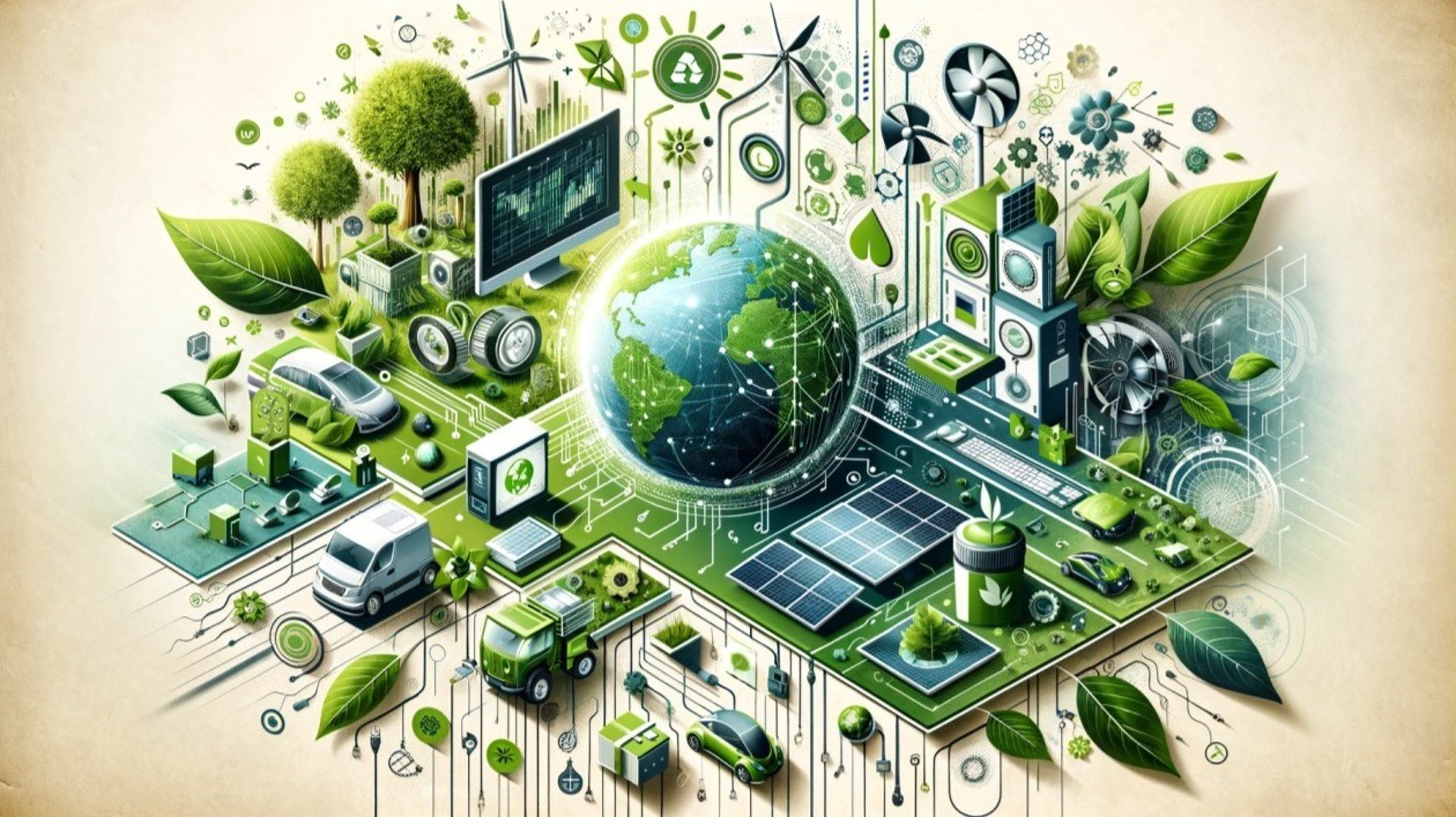
Green IT and Sustainability: Leading the Charge Toward a Greener Digital Future
Green IT and Sustainability: Leading the Charge Toward a Greener Digital Future
1/22/20254 min oku


Green IT and Sustainability: Leading the Charge Toward a Greener Digital Future
As the world becomes increasingly dependent on digital technologies, the environmental impact of the IT industry has come under growing scrutiny. The demand for data storage, processing, and transfer has led to the rapid expansion of data centers, while the explosion of electronic devices contributes significantly to electronic waste (e-waste). However, the tech industry is responding to these challenges with innovative solutions that align with sustainability goals. In this blog post, we will explore how data centers are going green and the efforts to improve e-waste management in the pursuit of a more sustainable digital future.
Data Centers Going Green: A Commitment to Sustainability
Data centers are the backbone of the digital world, housing the servers that store and process the vast amounts of data generated daily. However, these facilities consume enormous amounts of energy, leading to significant carbon emissions. According to the International Energy Agency (IEA), data centers account for nearly 1% of global electricity demand, with the potential for growth as more businesses and consumers move to cloud-based services. With this rapid expansion, tech companies face increasing pressure to reduce the environmental impact of their operations.
Renewable Energy Solutions
In response, many data centers are shifting toward renewable energy sources to power their operations. Companies like Google, Microsoft, and Amazon are leading the charge in adopting 100% renewable energy to run their data centers. Google, for example, has been carbon-neutral since 2007 and has committed to running all of its data centers with renewable energy sources such as wind and solar power. Microsoft, as part of its broader sustainability goals, has pledged to be carbon negative by 2030, aiming to remove more carbon from the atmosphere than it emits.
Efficient Cooling Techniques
Cooling systems are another major source of energy consumption in data centers. As servers operate at high speeds, they generate a significant amount of heat, which requires substantial cooling to maintain optimal performance. Traditionally, data centers rely on energy-intensive air-conditioning systems. However, innovative cooling techniques are being implemented to reduce energy usage and lower carbon emissions.
For instance, several companies are turning to natural cooling methods, such as using ambient air in colder climates or harnessing the cooling power of bodies of water like lakes and oceans. In Finland, for example, Microsoft’s experimental "underwater data center" uses seawater to cool servers and has shown promising results in reducing energy consumption.
Energy-Efficient Hardware
Beyond renewable energy and cooling techniques, companies are also investing in more energy-efficient hardware. The development of low-power processors and energy-efficient storage devices helps to reduce the overall energy consumption of data centers, further supporting sustainability efforts.
E-Waste Management: Tackling the Growing Problem of Electronic Waste
While data centers play a pivotal role in the IT ecosystem, e-waste—the discarded electronic devices and components—represents another pressing environmental issue. The rapid pace of technological advancements and the constant cycle of upgrading devices have led to a massive increase in e-waste. In fact, the Global E-Waste Monitor estimates that in 2023, the world generated a staggering 59.3 million metric tons of e-waste, with only a small percentage of it being properly recycled.
Extending the Lifecycle of Electronic Devices
To reduce the impact of e-waste, companies are focusing on improving the lifecycle of electronic devices. This involves designing products with longer lifespans, enabling easier repair and upgrades, and promoting the reuse and recycling of parts. For example, Apple has introduced initiatives like the Apple Trade In program, where customers can trade in their old devices for store credit or recycling. The company has also taken steps to use recycled materials in its products, such as recycled aluminum, rare earth elements, and plastic.
Recycling and Responsible Disposal
Recycling programs have become a crucial part of e-waste management strategies. Many companies are partnering with certified e-waste recycling organizations to ensure that electronic devices are responsibly dismantled and their materials are reused. Proper recycling not only reduces landfill waste but also conserves valuable materials like metals and plastics that can be repurposed in the production of new devices.
Leading global companies, including Dell and HP, have committed to using recycled plastics and other sustainable materials in their products. Dell’s closed-loop recycling program, for example, uses plastics collected from discarded electronics to create new devices, reducing the need for virgin materials and minimizing e-waste.
Regulation and Certification
Governments around the world are beginning to introduce regulations and certifications to ensure that e-waste is properly handled. In the European Union, the Waste Electrical and Electronic Equipment (WEEE) Directive requires producers to take responsibility for the collection and recycling of e-waste. Similarly, the RoHS (Restriction of Hazardous Substances) directive limits the use of hazardous materials in electronic products, helping reduce the environmental impact of e-waste.
Conclusion: Building a Greener Digital Future
The IT industry is at a critical juncture in its efforts to balance technological advancement with environmental responsibility. Through the adoption of renewable energy, efficient cooling methods, and sustainable hardware practices, data centers are making significant strides in reducing their carbon footprints. Similarly, by promoting the recycling and responsible disposal of e-waste, tech companies are playing an essential role in mitigating the environmental impact of electronic devices.
As consumers and businesses continue to embrace technology, it is essential that sustainability remains a key focus. By making conscious choices in how we manage our digital resources and waste, we can pave the way for a greener, more sustainable future.
